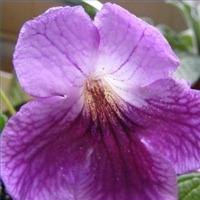You can always recognize Streptocarpus, a Greek name meaning "twisted fruit," by their narrow, strap-shaped leaves with blunt tips and trumpet-shaped flowers in two colors or in purple, pink, blue, red and white. Native to Africa, China, Indonesia, Madagascar and Thailand, Streptocarpuses are best known as relatives to African violets. You will find your plant also has requirements similar to African violets. Troubleshooting your Streptocarpus will help you grow your plant effortlessly, and keep your flowers blooming throughout the year.
Difficulty: Moderately Easy
Instructions
Things You’ll Need:
- South, east or west exposure
- High-phosphate fertilizer
-
Move your flowers to a window with a south, east or west exposure if you notice they appear pale or have uneven colors. These exposures will provide your Streptocarpuses with the ideal light levels of indirect, bright light for maximum growth.
-
Allow your Streptocarpus to dry almost completely before watering it again when you notice you overwatered it–you may be able to salvage your plant. An overwatered Streptocarpus will wilt and fall over. Never let your Streptocarpuses stand in water since they can get crown rot from the Pythium fungus and die. Streptocarpuses always recover from being too dry, but you can rarely salvage them from drowning in water.
-
Fertilize your plant once a month if you notice your flowers fading. Streptocarpuses can blossom without fertilizer, but will lose their color. Use a high-phosphate fertilizer, which you can find at a garden supply store or online.
Tips & Warnings
-
Keep your Streptocarpus strong and well groomed by pinching off all the faded blooms you find. This technique can keep flowers producing for up to six months on just one plant. Also, remove any yellowed lower leaves.
-
Avoid splashing the leaves of your Streptocarpus with water. This can cause the leaves to become spotted and rot.


Deprecated: strpos(): Passing null to parameter #1 ($haystack) of type string is deprecated in /home/agriviek8Qv/agriviet.net/public_html/wp-includes/comment-template.php on line 2522